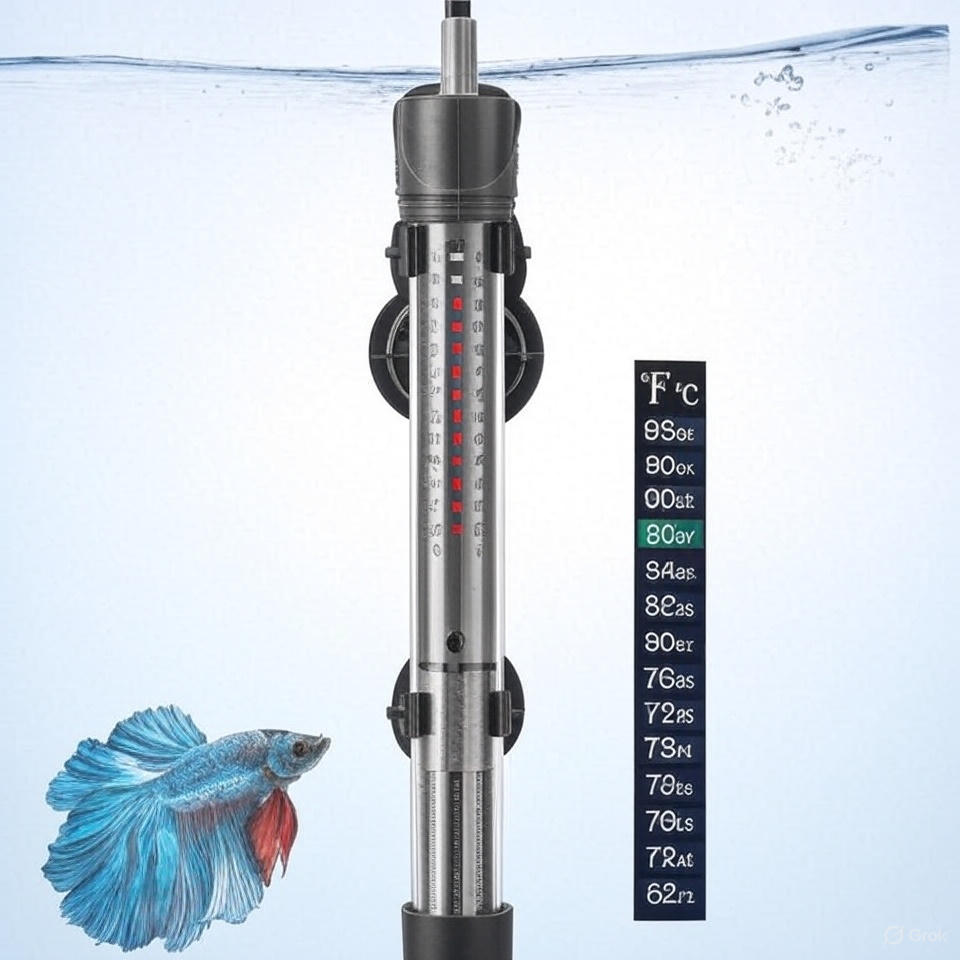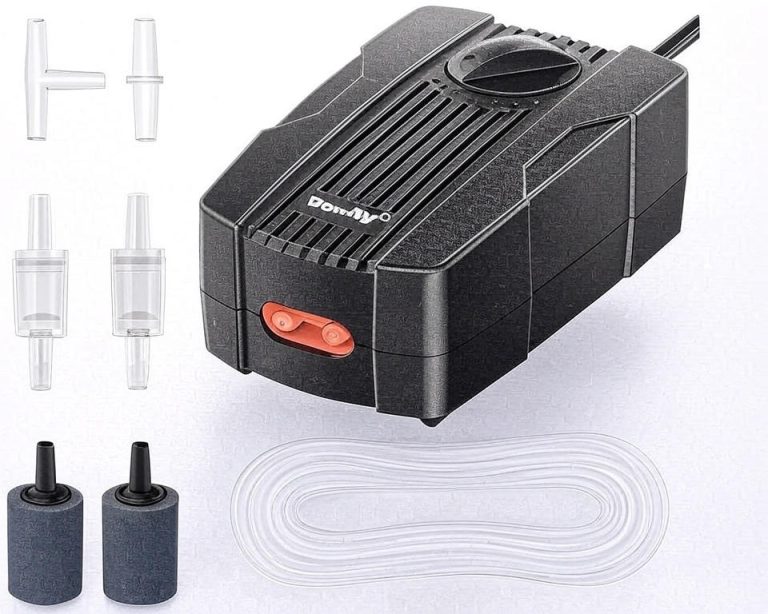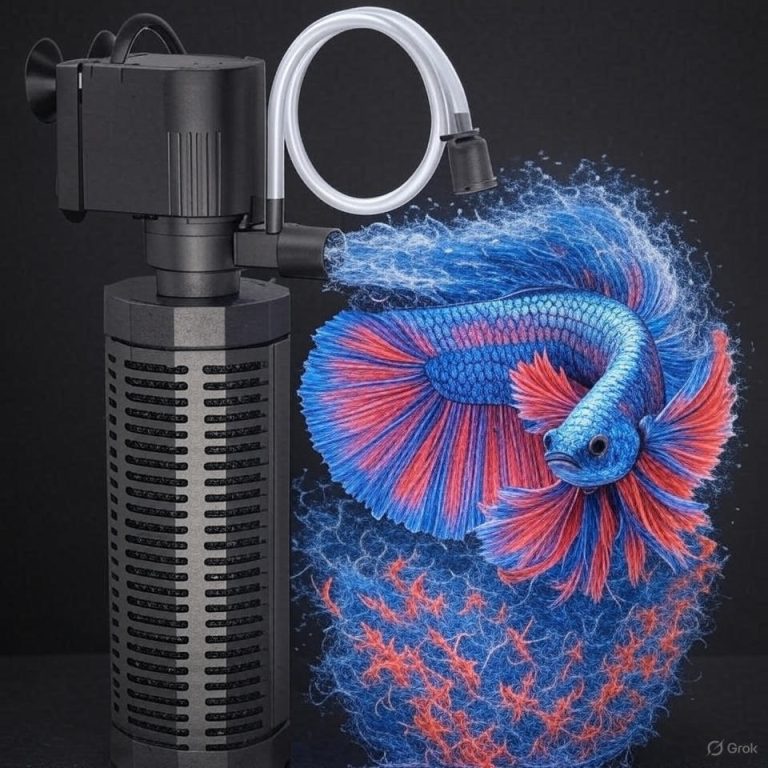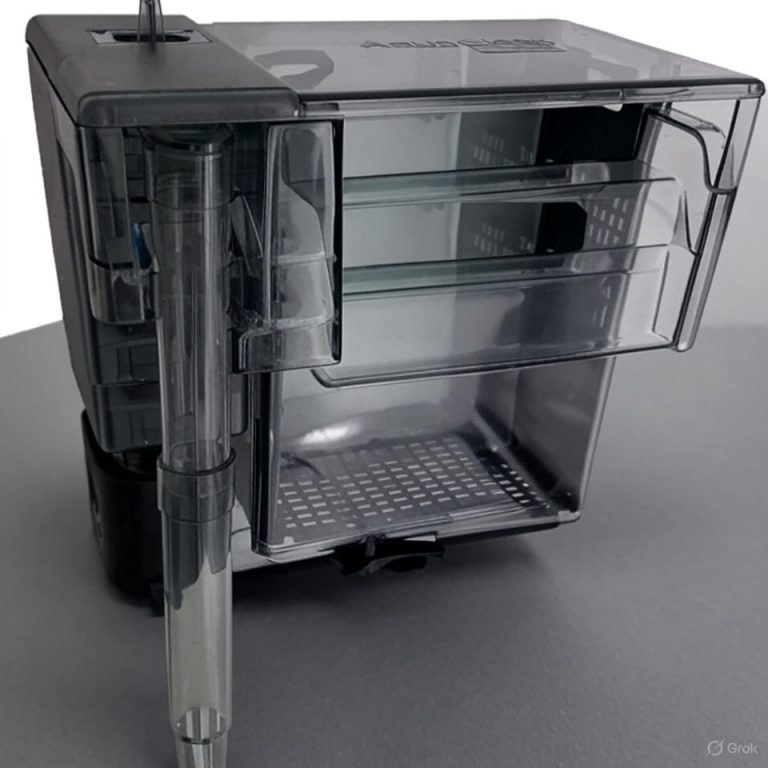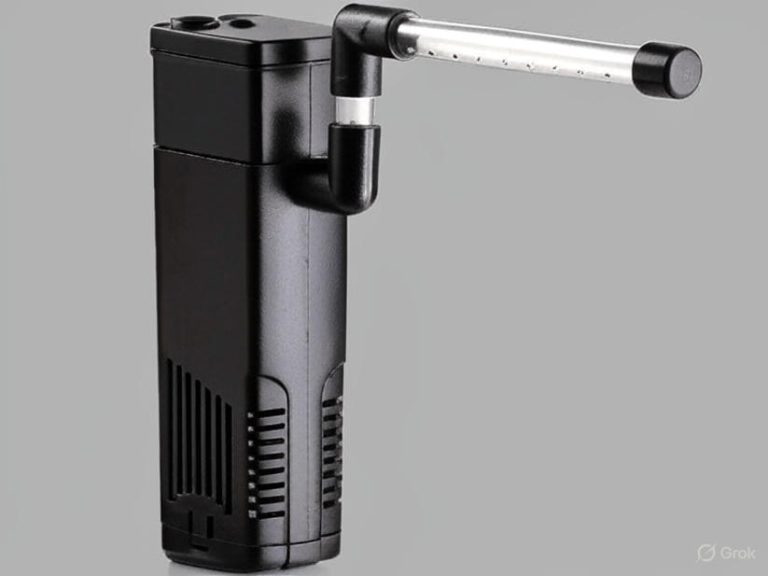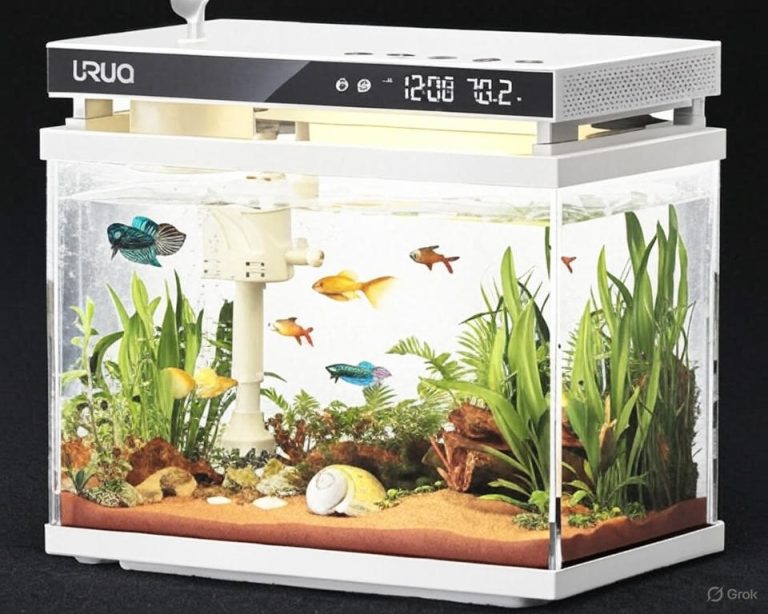5 Best 10 Gallon Aquarium Heaters In 2025
Maintaining proper water temperature stands as one of the most critical aspects of successful fishkeeping. Your aquatic pets depend on consistent thermal conditions to thrive, reproduce, and display their natural behaviors. Without a reliable heating system, even the hardiest fish species can experience stress, illness, and premature death.
Ten-gallon aquariums present unique heating challenges that larger tanks simply don’t face. The smaller water volume heats up quickly but also loses heat rapidly, creating temperature fluctuations that can harm your fish. This delicate balance requires a heater specifically designed for compact aquarium systems.
This comprehensive review examines five outstanding heaters perfectly suited for 10-gallon tanks. Each model brings distinct advantages to your aquarium setup, from advanced digital controls to budget-friendly reliability. We’ll explore every aspect that matters to aquarium enthusiasts: heating efficiency, temperature accuracy, safety features, installation ease, and long-term durability.
Why Proper Heating Matters for Your 10 Gallon Tank
Small aquarium systems face several thermal challenges that larger tanks naturally overcome through sheer water volume. Temperature stability becomes paramount when working with limited water capacity. A sudden drop in room temperature can rapidly cool your entire tank, shocking sensitive fish species.
Most tropical fish species require water temperatures between 76°F and 82°F to maintain optimal health. Cold water suppresses their immune systems, slows metabolism, and reduces appetite. Fish kept in inadequately heated environments often develop ich, fin rot, and other temperature-related ailments.
The general rule for heating power suggests 5 watts per gallon for tanks requiring 10-degree temperature increases above room temperature, though 2.5 to 5 watts per gallon provides a broader guideline for most situations. For 10-gallon systems, this translates to heaters in the 25-50 watt range.
Heat distribution also varies significantly in smaller tanks. Hot spots near the heater can create temperature gradients that stress fish. Quality heaters designed for compact systems address this issue through improved heat dissipation and strategic placement options.
Essential Features to Consider in 10 Gallon Heaters
Wattage Requirements
For 10-gallon tanks, experts recommend heaters between 30-50 watts, with many sources specifically suggesting 50 watts as optimal for this tank size. This wattage range provides sufficient heating power without risking dangerous temperature spikes.
Underpowered heaters struggle to maintain consistent temperatures, especially during cold weather. They run continuously, wearing out components prematurely and failing when you need them most. Overpowered heaters pose equally serious risks, potentially overheating your tank if the thermostat fails.
Temperature Control Systems
Analog thermostats use simple bimetallic strips that expand and contract with temperature changes. These basic systems work reliably but lack precision, often maintaining temperatures within 2-3 degrees of the set point.
Digital thermostats offer superior accuracy, typically maintaining temperatures within one degree of your target. Many feature LED displays showing current water temperature, making monitoring effortless. Some models include programmable settings for gradual temperature adjustments.
Safety Features
Automatic shut-off protection prevents overheating if water levels drop below safe minimums. This feature proves essential for 10-gallon tanks where evaporation can quickly expose heating elements.
Thermal protection circuits monitor internal heater temperatures, shutting down the unit if components overheat. This redundant safety system prevents catastrophic failures that could cook your entire aquarium.
Shatterproof construction using borosilicate glass or reinforced quartz materials prevents dangerous breakage. Budget heaters often use standard glass that can crack from temperature shock or physical impact.
Installation Flexibility
Fully submersible designs offer greater placement options within your tank. You can position these heaters horizontally, vertically, or at angles to optimize heat distribution and minimize visual impact.
Suction cup mounting systems should grip securely without requiring excessive force. Poor suction cups frequently fail, allowing heaters to shift positions or fall completely.
External controls eliminate the need to reach into your tank for temperature adjustments. This feature proves particularly valuable for tanks with aggressive fish or delicate aquascaping.
Top 5 Best 10 Gallon Aquarium Heaters: Detailed Reviews
1. Tetra HT Submersible Aquarium Heater With Electronic Thermostat (50-Watt)

The Tetra HT represents exceptional value in the compact heater market. This 50-watt unit delivers consistent performance for 2-10 gallon tanks, making it perfectly suited for standard 10-gallon setups.
Electronic thermostat technology provides precise temperature control within one degree of your target setting. The digital system responds quickly to temperature fluctuations, maintaining stable conditions even during significant room temperature changes.
Installation requires minimal effort thanks to the included suction cup mounting system. The heater mounts vertically or horizontally, allowing flexible placement options in various tank configurations. The compact 8-inch length fits easily in most 10-gallon tank corners without dominating the visual space.
Safety features include automatic shut-off protection when water levels drop dangerously low. The shatterproof construction uses reinforced materials that resist thermal shock and physical damage. Red and green indicator lights clearly show heating status at a glance.
Temperature range spans from 68°F to 93°F, accommodating both temperate and tropical fish species. The preset thermostat targets 78°F out of the box, perfect for most community tank inhabitants. Fine-tuning requires simple dial adjustments accessible without removing the unit from your tank.
Pros:
- Electronic thermostat provides accurate temperature control
- Compact size fits discretely in 10-gallon tanks
- Shatterproof construction enhances safety
- Automatic shut-off prevents dry heating
- Reasonable price point for electronic features
Cons:
- Limited to vertical or horizontal mounting only
- Indicator lights may be too bright for some setups
- Suction cups may require periodic repositioning
2. HITOP Adjustable Aquarium Heater (50W)
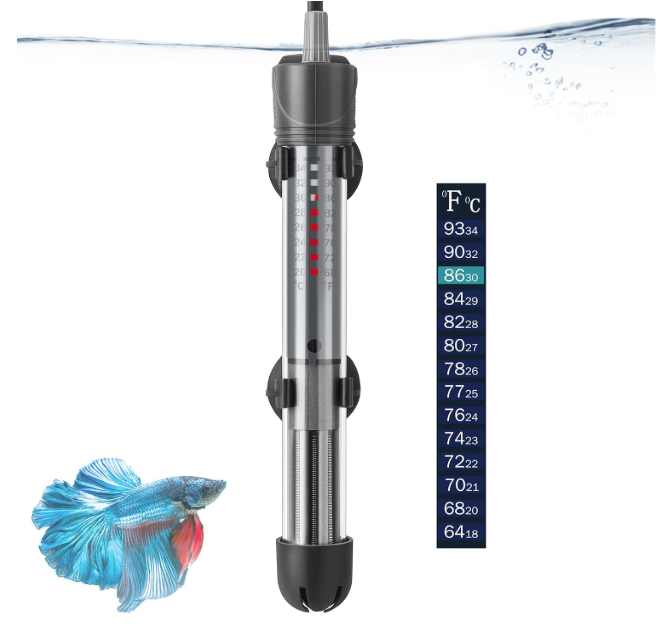
The HITOP 50W heater brings professional-grade features to the home aquarium market. This fully adjustable unit offers precise temperature control through its analog thermostat system, providing reliable heating for 10-gallon tanks.
Submersible design allows complete underwater installation, eliminating unsightly equipment above your waterline. The sleek black housing blends seamlessly with most aquarium backgrounds, maintaining your tank’s aesthetic appeal.
Temperature adjustment occurs via an external dial accessible without water contact. The range extends from 65°F to 93°F, covering virtually every freshwater and marine species requirement. Clear temperature markings on the dial eliminate guesswork during initial setup.
The included suction cups provide secure mounting on glass or acrylic surfaces. Two attachment points distribute weight evenly, reducing stress on individual suction cups. The heater mounts vertically, horizontally, or at angles to optimize heat circulation patterns.
Thermal protection prevents component damage from overheating conditions. The internal safety switch monitors heater core temperatures, shutting down the unit if dangerous levels are detected. Automatic operation resumes once temperatures return to safe ranges.
Pros:
- Fully submersible design with sleek appearance
- Wide temperature range accommodates diverse species
- External temperature dial enables easy adjustments
- Dual suction cup mounting provides stability
- Multiple positioning options improve heat distribution
Cons:
- Analog thermostat less precise than digital alternatives
- No indicator lights to show heating status
- Instruction manual could provide clearer guidance
3. hygger Mini Fish Tank Submersible Heater (50W) with Digital Display Controller
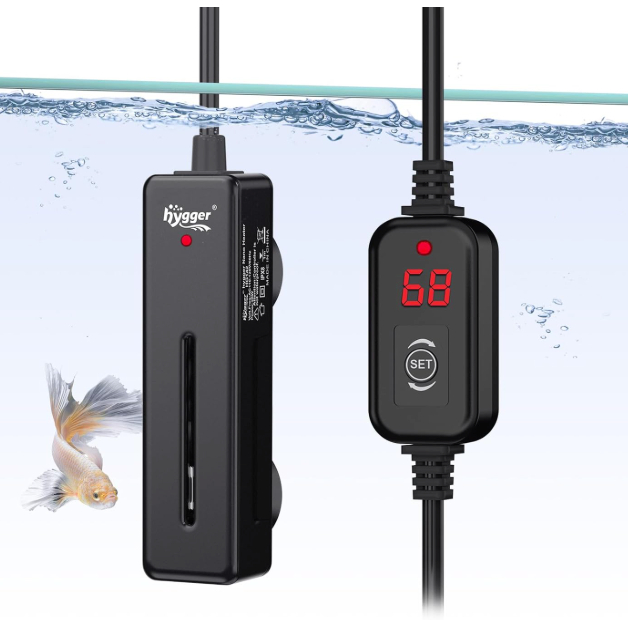
The hygger Mini heater revolutionizes compact aquarium heating through advanced digital technology. This 50W unit features an external digital controller connected to a submersible heating element, combining convenience with precision.
The digital display shows current water temperature in real-time, eliminating the need for separate thermometers. Temperature readings update continuously, allowing you to monitor conditions at a glance. The bright LED display remains visible from across the room.
External controller placement keeps electronic components away from water, enhancing long-term reliability. The wired connection between controller and heating element measures 6 feet, providing flexible installation options. You can mount the controller on your tank rim, nearby shelf, or aquarium stand.
Temperature adjustment occurs through simple button controls on the digital unit. The range spans 59°F to 94°F in one-degree increments, offering precision unavailable in analog systems. Set your target temperature, and the heater maintains it automatically.
The submersible heating element measures just 6 inches long, making it ideal for tight spaces in 10-gallon tanks. Despite its compact size, heat output remains consistent throughout the temperature range. The element can be positioned vertically, horizontally, or diagonally.
Safety features include overheating protection and automatic shut-off if the unit runs dry. The digital controller displays error codes for common problems, simplifying troubleshooting when issues arise.
Pros:
- Digital display provides real-time temperature monitoring
- External controller keeps electronics away from water
- Precise one-degree temperature increments
- Compact heating element fits tight spaces
- Error code system aids troubleshooting
Cons:
- Higher price point than basic analog heaters
- Wired connection may complicate some installations
- Digital display requires nearby power outlet
4. AQUANEAT Aquarium Heater (50W) with Thermometer
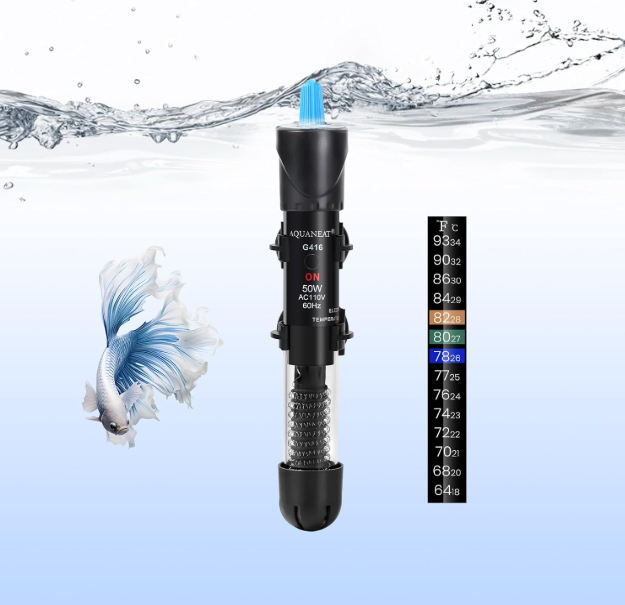
The AQUANEAT 50W heater combines reliable heating performance with integrated temperature monitoring. This submersible unit includes a built-in thermometer strip, eliminating the need for separate temperature measurement devices.
The integrated thermometer provides immediate temperature feedback during initial setup and ongoing monitoring. Color-coded temperature indicators make readings clear even in dimly lit rooms. The thermometer strip attaches permanently to the heater body, ensuring consistent placement.
Adjustable thermostat control allows precise temperature setting through a simple dial mechanism. The external adjustment knob remains accessible after installation, enabling temperature changes without disturbing your aquarium inhabitants. Clear degree markings simplify initial calibration.
Installation flexibility comes through the included suction cup mounting system. The heater attaches securely to glass or acrylic tank walls in vertical or horizontal orientations. The 8.5-inch length fits comfortably in most 10-gallon tank configurations.
Heat output remains consistent throughout the 68°F to 89°F operating range. The 50-watt capacity provides adequate heating power for 10-gallon systems while preventing dangerous temperature spikes. Thermal protection prevents overheating damage to internal components.
The quartz glass construction resists thermal shock and physical damage better than standard glass alternatives. The reinforced heating element withstands rapid temperature changes that might crack conventional materials.
Pros:
- Integrated thermometer eliminates separate monitoring devices
- Color-coded temperature readings improve visibility
- Adjustable thermostat with external control dial
- Quartz glass construction enhances durability
- Suitable price point for included features
Cons:
- Limited temperature range compared to competitors
- Thermometer accuracy may vary over time
- Suction cups may require periodic adjustment
5. PULACO 50 Watt Small Aquarium Betta Heater
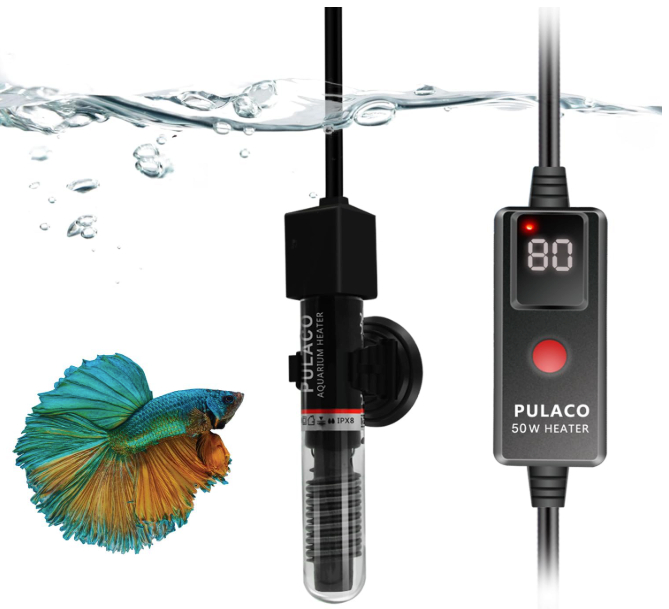
The PULACO 50W heater specifically targets small tank applications, making it an excellent choice for 10-gallon setups. This budget-friendly option delivers reliable heating performance without unnecessary complexity.
Compact design minimizes visual impact in smaller aquariums. The slim profile and black housing blend discretely with most tank backgrounds. At 7.5 inches long, the heater fits easily in corner installations or behind decorative elements.
Temperature control occurs through a simple analog dial system. The adjustment range covers 68°F to 89°F, adequate for most tropical fish species. Clear temperature markings on the control dial simplify initial setup and ongoing adjustments.
Fully submersible construction allows flexible placement options within your tank. The heating element can operate safely when completely underwater, providing installation flexibility unavailable with partially submersible models.
The included suction cups provide secure mounting on glass surfaces. Double suction cup design distributes mounting stress evenly, reducing the likelihood of attachment failure. The heater mounts vertically for optimal heat circulation.
Safety features include automatic thermal protection that prevents overheating damage. The internal safety switch monitors core temperatures, shutting down heating when dangerous levels are detected. Normal operation resumes automatically when safe temperatures return.
Pros:
- Budget-friendly price point
- Compact size perfect for small tanks
- Simple operation with analog temperature control
- Fully submersible design enables flexible placement
- Automatic thermal protection prevents overheating
Cons:
- Basic feature set without advanced options
- No temperature indicator lights
- Limited temperature range compared to premium models
- Analog thermostat provides less precision than digital alternatives
Comprehensive Comparison Analysis
Heating Performance
All five heaters deliver adequate 50-watt heating capacity for 10-gallon tanks. The hygger Mini and Tetra HT models provide the most precise temperature control through their digital systems. Analog models like the HITOP, AQUANEAT, and PULACO offer reliable heating with slightly less precision.
Temperature response times vary among models, with digital units typically reacting faster to temperature changes. The hygger Mini’s external controller enables the quickest response, while analog models may lag slightly during rapid temperature shifts.
Safety and Reliability
The Tetra HT and hygger Mini lead in safety features, offering comprehensive overheating protection and automatic shut-off capabilities. Both models include advanced thermal monitoring that prevents catastrophic failures.
Construction quality varies significantly across the lineup. The AQUANEAT’s quartz glass construction provides superior durability, while the Tetra HT’s shatterproof design offers excellent impact resistance. Budget models may use standard glass that requires more careful handling.
Installation and Usability
The hygger Mini’s external controller provides the ultimate in user convenience, allowing temperature adjustments without water contact. The digital display eliminates guesswork in temperature monitoring and adjustment.
Traditional models require reaching into the tank for temperature changes, though external adjustment dials minimize this inconvenience. The AQUANEAT’s integrated thermometer adds monitoring convenience without requiring separate devices.
Value Proposition
The PULACO offers exceptional value for basic heating needs, providing reliable performance at the lowest price point. The Tetra HT represents the best balance of features and affordability, delivering electronic precision at reasonable cost.
Premium models like the hygger Mini justify higher prices through advanced features and superior convenience. The external controller and digital display provide benefits that many aquarists find worth the additional investment.
Installation Tips and Best Practices
Optimal Heater Placement
Position your heater near your filter’s water flow to ensure even heat distribution throughout the tank. The moving water carries heated water away from the heater, preventing hot spots that can stress fish or damage plants.
Avoid placing heaters directly against tank walls or decorations. Allow at least one inch of clearance around the heating element for proper water circulation. Poor circulation can cause localized overheating and reduce heater efficiency.
Vertical installation typically provides better heat circulation than horizontal placement. However, tank depth may limit vertical options in some 10-gallon configurations. Angled installations can provide compromise solutions when space is limited.
Water Level Considerations
Always maintain water levels above the minimum fill line marked on your heater. Exposed heating elements can overheat rapidly, potentially damaging the heater or creating safety hazards. Small tanks like 10-gallon systems risk overheating if heating wattage pushes toward 50 watts, making proper water levels even more critical.
Monitor water levels regularly, especially during summer months when evaporation rates increase. Top off your tank promptly when levels drop to prevent heater exposure.
Temperature Calibration
Use a separate, accurate thermometer to verify your heater’s temperature readings during initial setup. Some heaters may require calibration to achieve precise temperature control. Digital models typically offer calibration procedures in their instruction manuals.
Allow 24 hours for temperature stabilization before making final adjustments. New heaters may take time to reach equilibrium with your tank’s thermal characteristics. Patience during initial setup prevents overcorrection and temperature swings.
Maintenance Requirements
Clean heater surfaces monthly to remove algae and debris buildup. Dirty heaters operate less efficiently and may develop hot spots that affect longevity. Use algae scrapers or soft brushes to clean glass surfaces gently.
Inspect suction cups regularly for signs of wear or loosening. Replace deteriorated suction cups promptly to prevent heater displacement. Most manufacturers sell replacement suction cups separately for ongoing maintenance.
Troubleshooting Common Heater Issues
Temperature Inconsistencies
Inconsistent temperatures often result from inadequate water circulation around the heater. Improve flow by adjusting filter outlets or adding circulation pumps. Ensure nothing blocks water movement around the heating element.
Aging thermostats may lose calibration accuracy over time. If temperature readings drift consistently high or low, recalibrate your heater or consider replacement. Most heaters provide 1-2 degrees of accuracy when functioning properly.
Heater Won’t Turn On
Check power connections and verify the outlet supplies electricity using another device. Examine the power cord for damage, particularly near connection points where stress concentrations occur.
Ensure water levels meet minimum requirements marked on the heater housing. Many models include safety switches that prevent operation when improperly submerged. Add water if levels have dropped below safe minimums.
Overheating Problems
Overheating typically indicates thermostat failure or inadequate water circulation. Remove the heater immediately and allow it to cool completely before inspection. Never attempt to adjust an overheated heater while it remains in the tank.
Check for debris blocking water flow around the heating element. Clean any accumulated material and ensure proper clearance around the heater. Replace the unit if overheating recurs after cleaning.
Frequent Cycling
Rapid on-off cycling suggests the heater is marginally undersized for current conditions. Room temperature drops, increased evaporation, or equipment changes may require heater upgrades. Monitor cycling frequency and duration to identify patterns.
Poor insulation can cause excessive heat loss, forcing heaters to work harder than designed. Consider adding tank lids, insulation panels, or relocating tanks away from drafts or air conditioning vents.
Energy Efficiency and Operating Costs
Power Consumption Analysis
50-watt heaters consume approximately 0.05 kilowatt-hours per hour of operation. Actual runtime depends on room temperature, tank insulation, and target water temperature. Most heaters operate 30-50% of the time under normal conditions.
Annual operating costs typically range from $15-30 for continuous operation, depending on local electricity rates. Energy-efficient models with precise thermostats may reduce costs by minimizing unnecessary heating cycles.
Seasonal Variations
Winter heating demands increase significantly as room temperatures drop and heating systems create air drafts. Expect 25-40% higher runtime during cold months. Summer operations may be minimal in air-conditioned spaces.
Tank location affects seasonal energy usage dramatically. Tanks near windows experience greater temperature swings, while interior locations remain more stable. Consider seasonal tank relocation for optimal efficiency.
Cost-Saving Strategies
Tank insulation reduces heat loss and energy consumption. Styrofoam sheets, aquarium backgrounds, or custom insulation panels can improve efficiency significantly. Focus insulation efforts on sides and back panels where heat loss is greatest.
Timer-controlled room heating can reduce aquarium heating demands during occupied hours. Raising room temperature 2-3 degrees during peak hours reduces heater runtime and energy costs.
Safety Considerations and Risk Management
Electrical Safety
Always unplug heaters before performing maintenance or adjustments. Water and electricity create dangerous combinations that can cause electrocution or equipment damage. Maintain dry hands and use non-conductive tools when working near heaters.
Ground fault circuit interrupters (GFCI) provide essential protection for aquarium electrical systems. Install GFCI outlets or use portable GFCI adapters for all aquarium equipment. Test GFCI devices monthly to ensure proper operation.
Temperature Monitoring
Backup thermometers provide redundant temperature monitoring that can prevent disasters. Digital thermometers with alarms alert you to dangerous temperature changes when heaters malfunction. Place backup thermometers away from heaters for accurate readings.
Daily temperature checks help identify developing problems before they become critical. Record temperatures in a log book to track trends and identify potential issues. Sudden changes often indicate impending heater failure.
Emergency Procedures
Develop emergency procedures for heater failures during cold weather. Backup heaters, temporary heat sources, or fish relocation plans can prevent losses during equipment failures. Keep emergency supplies readily available during winter months.
Know how to safely remove malfunctioning heaters from your tank. Turn off all electrical equipment before reaching into the water. Allow overheated heaters to cool completely before handling.
Final Recommendations and Buying Guide
Best Overall Choice
The Tetra HT Submersible Aquarium Heater emerges as the top recommendation for most 10-gallon tank applications. Its electronic thermostat provides precise temperature control while maintaining an affordable price point. Safety features, reliable performance, and widespread availability make it an excellent choice for both beginners and experienced aquarists.
Best Premium Option
The hygger Mini Fish Tank Heater justifies its higher price through superior convenience and precision. The external digital controller and real-time temperature display provide benefits that serious aquarists will appreciate. This model suits dedicated hobbyists who value advanced features and monitoring capabilities.
Best Budget Choice
The PULACO 50 Watt heater delivers reliable heating performance at the lowest price point. While lacking advanced features, it provides essential heating functions for budget-conscious aquarists. This model works well for temporary setups or backup heating applications.
Best Value Balance
The AQUANEAT Aquarium Heater offers an attractive middle ground between features and price. The integrated thermometer provides monitoring convenience while maintaining reasonable cost. Quartz glass construction adds durability that justifies the slight price premium over basic models.
Best for Advanced Users
The HITOP Adjustable Aquarium Heater appeals to experienced aquarists who appreciate precise manual control. The wide temperature range and flexible positioning options suit specialized applications or demanding species requirements.
Conclusion
Selecting the right heater for your 10-gallon aquarium requires balancing performance, features, and budget considerations. The models reviewed here represent the best options currently available, each offering distinct advantages for different user needs and preferences.
Remember that heater failure remains one of the leading causes of aquarium disasters. Invest in quality equipment, maintain backup monitoring systems, and develop emergency procedures to protect your aquatic investment. Regular maintenance and monitoring ensure years of reliable service from whichever heater you choose.
The compact nature of 10-gallon systems makes precise temperature control both more challenging and more critical than in larger tanks. Any of these five heaters will serve you well when properly installed and maintained. Your fish deserve stable, comfortable conditions that only quality heating equipment can provide consistently.
Consider your specific needs, budget constraints, and technical preferences when making your final decision. The right heater will provide years of reliable service while keeping your aquatic companions healthy and thriving in their carefully maintained environment.

